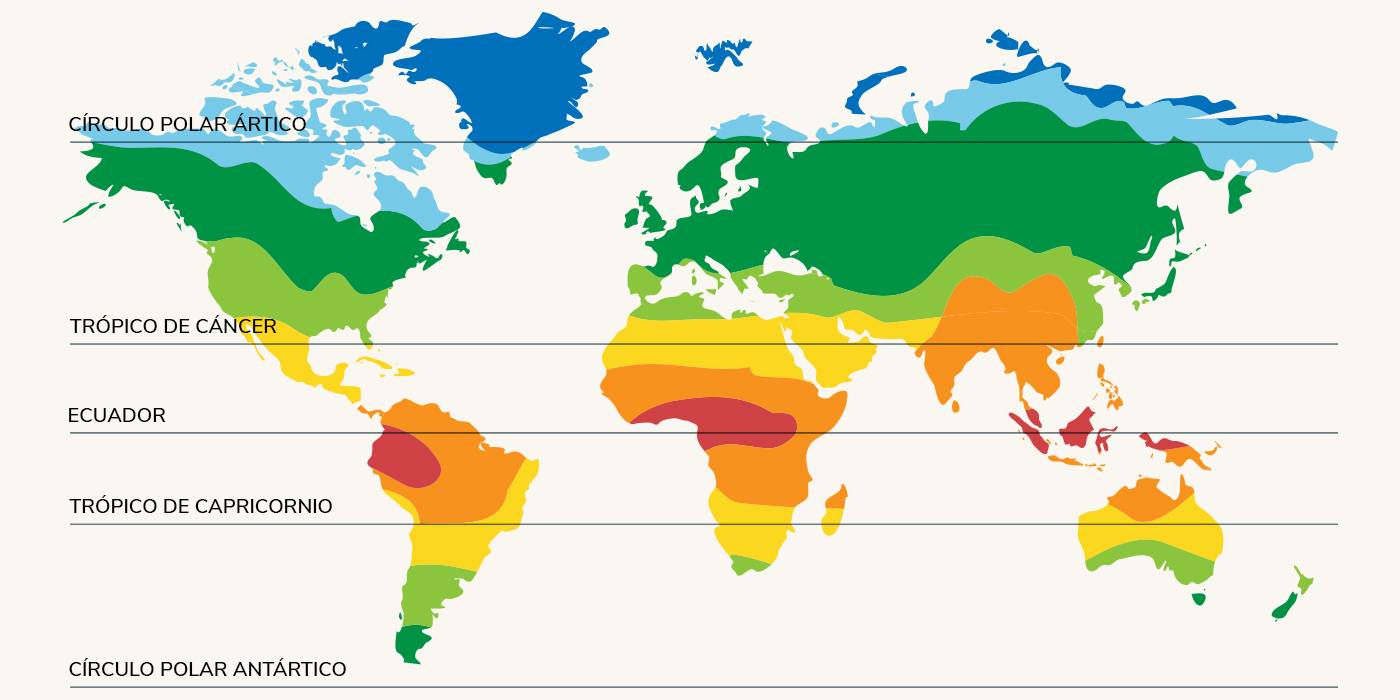The influence of the climate on wine

Eva Pizarro
Sumiller en restaurante Fierro y formadora en Tandem Gastronómico.
Can wine be made anywhere in the world?
It is a well-known fact that vines are sturdy plants and need very little to survive, but for them to produce good fruit, they need a temperate climate. The main vine-growing regions in the world are located between 30º and 50º latitude in the Northern and Southern hemispheres. California, Europe, South America, Australia, New Zealand and South Africa. Vines do not develop properly in extremely hot or cold climates. The determining factor for growing vines in these areas is the climate, but it is not the only one.
There are other regions such as Brazil, the south of England, and other areas that are becoming consolidated as quality producers. Climate change and technology are undoubtedly leading to changes on the world vine-growing map, and it has only just begun. If we go into further detail into the types of climates we can find, we can see how they affect and modify the features of the wines that are produced in each one.

When referring to vine-growing, there are 4 different climates in Spain:
Oceanic climate: covering Northern Spain from Galicia to Navarra. Cool temperatures, with little temperature variations between summer and winter and night and day, with high rainfall throughout the year. This leads to small vines with a high acid content for red and white wines alike.
Continental Climate: covering the areas in the centre of the Iberian Peninsula: Castilla-León, Extremadura, Madrid, Castilla La Mancha, Rioja and Aragón. These areas are characterised by cold winters and hot, dry summers, which is further accentuated the further away from the coast we get. There are considerable temperature variations between night and day.There is a huge variety of wines because of the enormous area, but in general they are wines with a fairly high alcohol content, full bodied and well-structured, making them ideal for ageing in casks or bottles.
Subtropical Climate covering the Canary Islands. Moderate temperatures, rainfall and humidity, or an extremely arid climate depending on the area. This is an exceptional climate which combines with its diverse orography and volcanic soil. Some very singular wines are produced there.
Mediterranean Climate: covering the whole eastern and southern coastline from Catalonia, down through the Region of Valencia and Murcia, through to Andalusia. Characteristically hot, dry summers without much temperature variation between day and night. This leads to very mature wines, full-bodied with low acidity, ideal grapes for sweet wines.

Analysing wines from the point of view of the climate is obviously like trying to do a jigsaw puzzle without all the pieces. Altitude, orientation, soil, ocean currents, commercial flows, grape varieties and many other factors will determine the end result.
Nevertheless, the climate plays its part, so the next time you are enjoying a glass of wine, think about the climate where it was made, which almost certainly had an influence on it.
What do you think about?
Share comments, opinions and tricks with the Community







